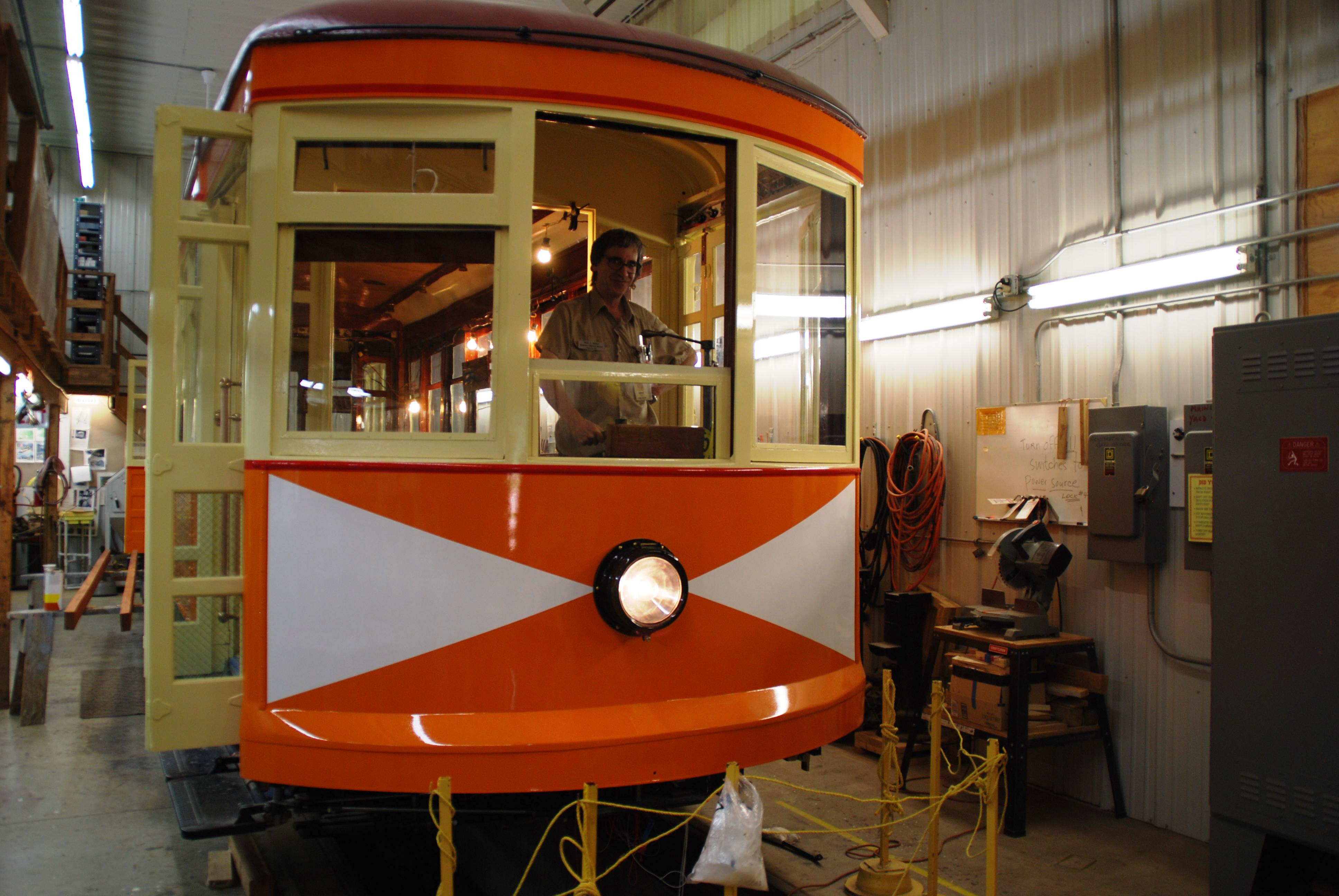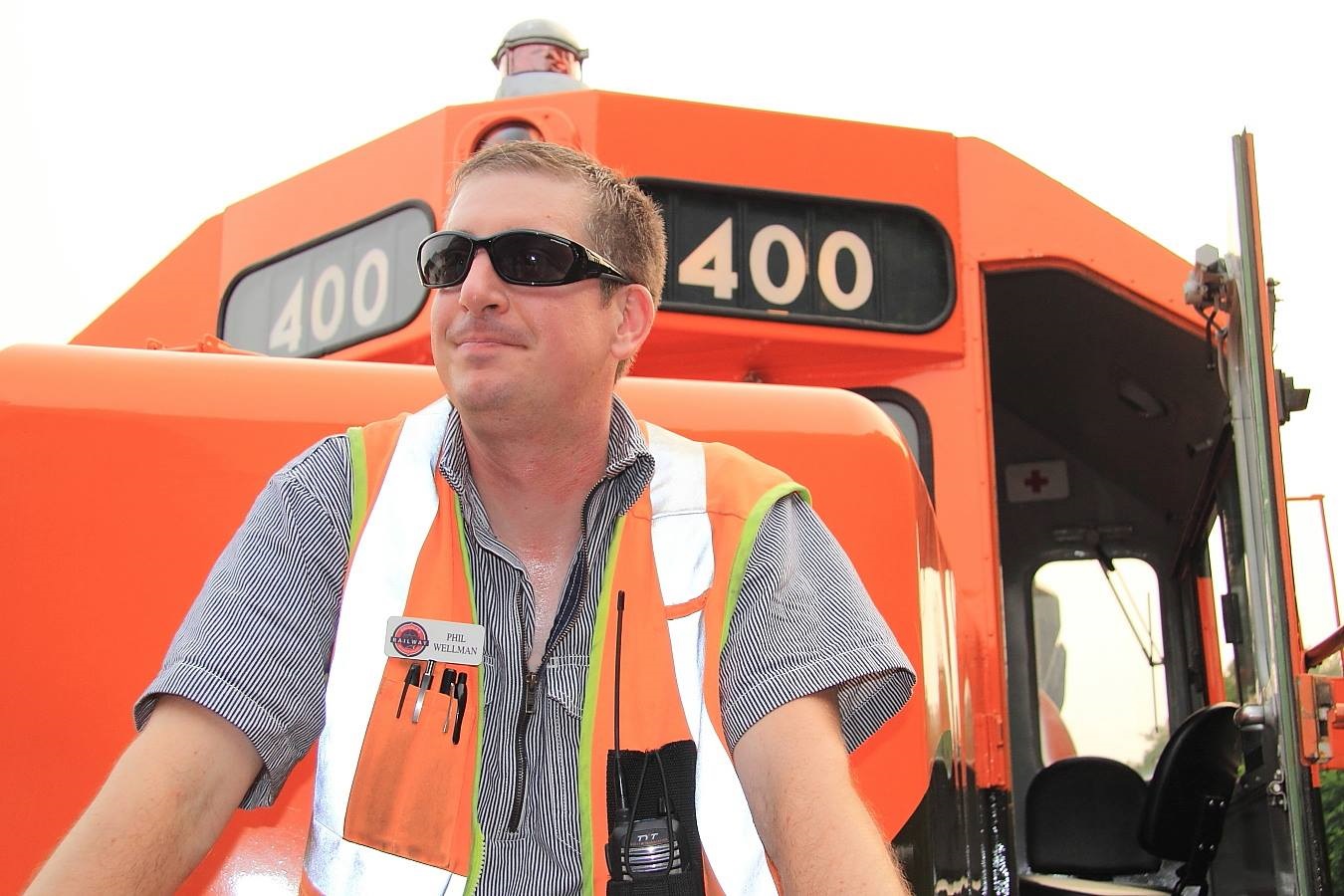 Mike Miller was studying electronics when he paid his first visit to the newly-opened Como-Harriet Streetcar Line in south Minneapolis.
Mike Miller was studying electronics when he paid his first visit to the newly-opened Como-Harriet Streetcar Line in south Minneapolis.
Immediately intrigued, he began working alongside volunteers committed to keeping Streetcar No. 1300, a vestige of Twin City Rapid Transit that once ran on University Avenue, operating between Lake Harriet and Lake Calhoun.
Nearly 40 years later Miller is helping bring yet another piece of streetcar history back to life, spending several hours a week wiring and installing electrical components on a streetcar that operated in Winona from 1913 through 1938.
A small group of Minnesota Streetcar Museum volunteers began meticulously restoring the streetcar a decade ago. Freshly painted pumpkin orange and cream, the Winona No. 10 streetcar is expected to make its public debut on a short stretch of track near downtown Excelsior later this year.
“It really is a strikingly handsome car,” Miller said recently from the carbarn where the streetcar and others in various states of repair are kept.
Miller’s involvement in the project is a study in contrasts: by day, he works as a Signal Foreperson ensuring the lights, signals and sensors along the region’s present day light rail lines are operating as intended.
But while there are clear differences — light-rail cars feed off of 3,000-amp substations while the Excelsior streetcar line uses a 300-amp power supply — there are also plenty of parallels.
A box tucked beneath a passenger seat will house an alarm panel similar to those found on light-rail vehicles. Miles of wiring connect relays, sensors and fuses that control the doors, lights and bells. And a custom-designed control panel mounted in the cab allows the operator to quickly troubleshoot while in service.
The streetcar retains its authentic feel, but the wiring provides modern-day protections that improve safety and reliability.
“When I talk about what I’m doing with colleagues at work, they say ‘You’re not restoring a streetcar, you’re building a light-rail vehicle,’” said Miller, who began in Metro Transit’s radio shop in 2001. “Well, almost.”
Miller isn’t the only Metro Transit staffer with a foot in the old and new worlds of transportation.
Bus operator Fred Beamish and Senior Planner John Dillery volunteer as streetcar operators on the Como-Harriet Streetcar Line. Senior Signal Engineer Phil Wellman and Engineering & Facilities Intern Ryan Heath serve on the St. Paul’s Minnesota Transportation Museum’s Board of Directors.
Wellman’s grandfather and great-grandfather each worked in the railroad industry and he began volunteering at the museum while still in high school, scraping grease from old locomotives.
 The work led him to a job as an entry-level Signals Systems Draftsman and, in 2003, to his joining Metro Transit’s fledgling Signals Department. The locomotives the museum operates between Osceola, Wisc. and Marine on St. Croix, Minn., are decades old but Wellman said there are still similarities to the work he does at Metro Transit.
The work led him to a job as an entry-level Signals Systems Draftsman and, in 2003, to his joining Metro Transit’s fledgling Signals Department. The locomotives the museum operates between Osceola, Wisc. and Marine on St. Croix, Minn., are decades old but Wellman said there are still similarities to the work he does at Metro Transit.
“I’m very comfortable working in both worlds and there are a lot of parallel principles so it’s fun to crossover,” Wellman said.
Several Metro Transit retirees are also actively engaged in the preservation of Minnesota’s transportation history.
Retired Mechanic-Technician Howie Melco, whose grandfather was a streetcar operator, became involved in the Como-Harriet Streetcar Line when he was 19 years old and has used his craftsmanship to help bring several streetcars back to life over the years.
On the Winona streetcar, he carefully sliced off the bottom eight inches of the body, replacing it seamlessly with new material and applying layers of glossy paint. “It’s getting exciting toward the end here,” Melco said.
Aaron Isaacs, who worked at Metro Transit from 1973 to 2006, has written extensively about the region’s streetcar history and leads the Minnesota Streetcar Museum, which operates both the Como-Harriet and Excelsior lines.
The Como-Harriet streetcar barn was recently expanded to provide space for another streetcar and a collection of streetcar history.
For Miller, the Signal Foreperson, the decades spent volunteering with the Minnesota Streetcar Museum are both inspiring and rewarding. He’s especially proud of the Winona restoration, his biggest undertaking to date. Miller estimates the project will command at least 1,000 hours of his time before completion.
“Sooner or later this thing is going to run,” he said. “I look forward to saying I helped make it happen.”